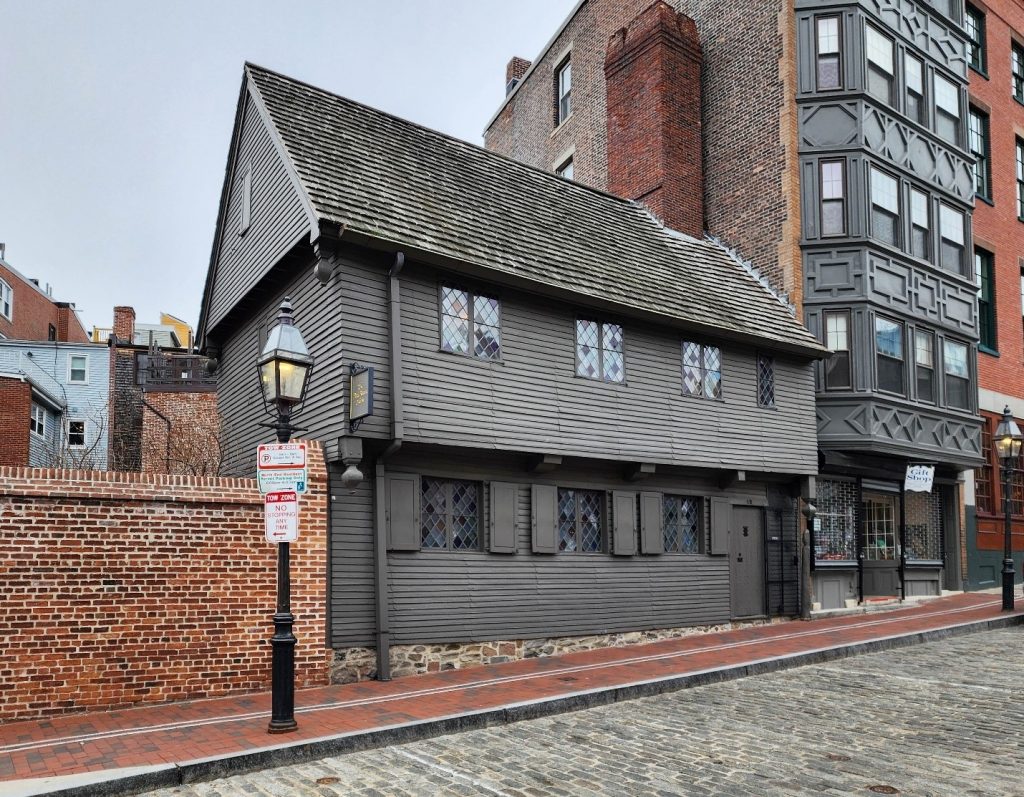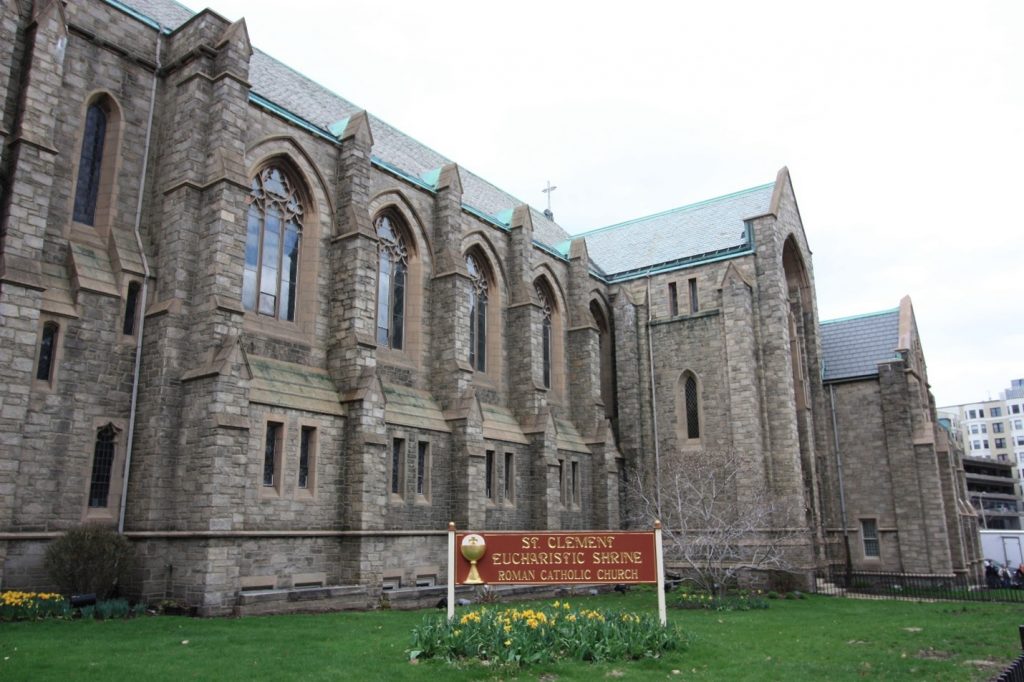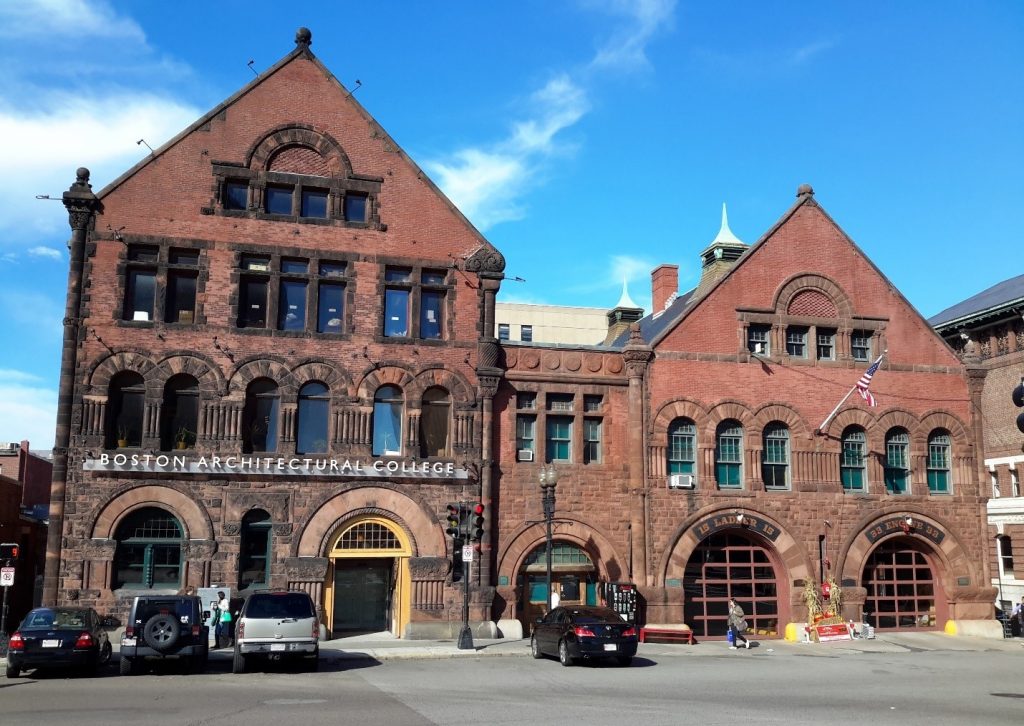by Brandon McGrath-Neely, Library Assistant
Having recently moved to Boston from a much smaller, younger town, I have been amazed at how many beautiful buildings the city has to offer. In less than half a mile, you can walk from the medieval-looking wooden home of Paul Revere to the modern concrete goliath, Boston City Hall. Along the way, you’ll see a half-dozen architectural styles and movements sitting side by side.

While this gives the city a beautiful character, blending the old with the new, it can be difficult to interpret your surroundings without prior knowledge about the city’s development or an architectural vocabulary. Wanting to more fully engage with the city’s built environment, I consulted the MHS reference library. Before this research, I had the bare minimum knowledge of architecture – I could tell a floor from a wall, and that was about it.
Like any good trip to the Historical Society, my project started in ABIGAIL, our online catalog. I used keywords to find items that might fit: “architecture,” “buildings in Boston,” and “Boston city planning” all returned some interesting results, but I knew I could refine my search further. I began searching by subject, which I often recommend to researchers wanting to quickly see what materials the MHS has on a given topic. By trying different phrases, I was able to generate a list of relevant materials very quickly.
I found that the MHS has plenty of published works on architecture. Some were broad, and I used them to familiarize myself with the most basic ideas and historical movements in American architecture. Others were specific, providing me with the vocabulary for several types of brick patterns and roof shapes. My personal favorites were handbooks, designed to help readers identify architectural styles at a glance. Written for architecture students and laypeople alike, they provided excellent summaries of important movements and their key features.
When I left Ellis Hall at the end of each day, I was excited to start recognizing different elements in the buildings I saw. On the short walk to the nearest train station, you leave the Georgian Revival MHS, pass the pointed arches of the Gothic-style Saint Clement Eucharistic Shrine, and turn just before reaching the Romanesque Boston Architectural College’s dark, rough stone exterior.

Researchers at the MHS are often working towards some form of published project: a book, a thesis, or a family tree. But the materials here are just as useful for those who are simply interested in learning about the world around us. I found the research valuable because as I walked through Boston, I could look at a building and consider how and why it made me feel a certain way. It gave me a sense of familiarity and even ownership over a city with lifetimes of history and culture, and I felt a sense of pride and excitement that I had learned it on my own.
In future blog posts, I’ll be sharing some of what I’ve learned by considering parts of the architecture at the MHS itself. The details of Ellis Hall and the design of our building’s exterior are both pleasing to look at and work together to tell the story and values of the MHS through architectural design. Follow along, and if you get the chance to visit in person, see it for yourself! As I learned through this research, the MHS is not just a space for graduate students and professional researchers – it’s a place for anyone to read and think about the things that matter to them.

Interested in architecture? Here’s what I used to start learning:
- A-B-C of Architecture – by Frank E. Wallis (NA200 .W25) This is a concise and effective introduction to the major movements in European architectural history. Wallis packs quite a bit in this brief handbook, and does a good job of connecting engineering, aesthetics, and history. For those looking for a more narrative style, this is a good place to start.
- Identifying American Architecture: A Pictorial Guide to Styles and Terms, 1600-1945 – by John J. Blumenson (NA705 .B55). Of all the books I read for this project, this was the one I found most useful. Blumenson selects a handful of photos and roughly a dozen key features for each architectural movement in the United States, and outlines what makes them distinct. If you’re interested in identifying the buildings around you, this is the best place to start.
- Early American Houses: and a Glossary of Colonial Architecture Terms – by Norman Morrison Isham (REF. NA7206 .I7) This is a helpful book for those interested in early colonial architecture from a construction and material perspective. The essays focus directly on specific architectural elements from colonial structures, and the glossary is a very good resource for developing your architectural vocabulary.
- Boston After Bulfinch: An Account of its Architecture 1800-1900 – by Walter Harrington Kilham (REF. NA735.B7 K5) This book has a narrative feel, guiding readers from the Federalist period of Boston architecture to the “Steel Frame” period. This book is especially useful for naming the important architects of each movement, and helpfully lists some of the buildings they constructed. This is an excellent all-around text for beginners (like me).
- The A.I.A. Guide to Boston – by Michael and Susan Southworth (REF. NA735.B7 S68 1984) This guide was written by a married couple who worked as city planners and architects in Boston, hired by the city to work on preservation projects. This book contains information about hundreds of locations and landmarks, as well as self-guided tours based on different themes. If there’s an area or aspect of the city you find yourself especially interested in, this would be a great choice.
- Architecture, Boston – By the Boston Society of Architects (REF. NA735.B7 B67 1976 Whereas most of the books recommended here are organized by architectural style or period, this book seeks to consider the architecture of Boston, neighborhood by neighborhood. Filled with dozens of high-quality photos, this is an excellent resource for those interested in Boston’s contemporary appearance and character.
- Great Georgian Houses of America – by the Architects’ Emergency Committee (NA707 .A7) This is a well-soruced, clear display of the wide variety in styles, materials, and approaches to the Georgian style in the late 18th century. There’s little commentary throughout, so it isn’t a useful resource for introductory readers, but those with an existing vocabulary and understanding of the Georgian style may find this book useful in finding examples of the style.
For my own research, I worked primarily with published materials in our collection. Though I consulted some manuscript items that related to architecture, I found that the published materials were more useful for gaining a basic knowledge. The published materials can sometimes be overshadowed by our collection of presidential autographs or beautiful portraits, but these books and pamphlets are just as useful for research. Don’t miss out!

